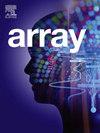Drone detection in airport environments: A literature review
IF 4.5
Q2 COMPUTER SCIENCE, THEORY & METHODS
引用次数: 0
Abstract
The increasing use of drones in airport airspace presents a serious challenge to safety and efficiency. Incidents involving unmanned aerial vehicles can cause delays, flight cancellations, and collision risks, raising concerns among airport officials, travelers, and other aviation stakeholders. This study aims to systematically analyze the main drone detection techniques used in airports, identifying research gaps, advantages, and limitations of each method while also highlighting future directions to improve airspace security. Kitchenham’s systematic review method was used, with searches carried out from 2014 to 2025. After screening titles and abstracts and applying inclusion criteria, 25 publications were thoroughly assessed. The analysis shows that while radar systems provide the longest detection range ( km) and radio frequency methods achieve the highest classification accuracy (99%), they often come with higher costs. In comparison, camera-based systems can reach high precision (90%) at speeds up to 170 FPS, and multimodal solutions show the greatest potential for robustness, with positioning errors below 1.5% of the detection range. Although technical and operational challenges still exist, the combined use of various methods and machine learning techniques shows promise for improving the accuracy and reliability of drone detection at airports.

机场环境中的无人机检测:文献综述
无人机在机场空域的使用越来越多,对安全和效率提出了严峻的挑战。涉及无人机的事故可能导致航班延误、取消和碰撞风险,引起机场官员、旅客和其他航空利益相关者的担忧。本研究旨在系统分析机场使用的主要无人机检测技术,确定每种方法的研究差距、优势和局限性,同时突出未来提高空域安全的方向。使用了Kitchenham的系统评价方法,从2014年到2025年进行了搜索。在筛选标题和摘要并应用纳入标准后,对25篇出版物进行了全面评估。分析表明,虽然雷达系统提供最长的探测范围(>;10公里),射频方法实现最高的分类精度(约99%),但它们通常成本较高。相比之下,基于相机的系统可以在高达170 FPS的速度下达到高精度(>90%),并且多模式解决方案显示出最大的鲁棒性潜力,定位误差低于检测范围的1.5%。尽管技术和操作方面的挑战仍然存在,但综合使用各种方法和机器学习技术,有望提高机场无人机探测的准确性和可靠性。
本文章由计算机程序翻译,如有差异,请以英文原文为准。
求助全文
约1分钟内获得全文
求助全文

 求助内容:
求助内容: 应助结果提醒方式:
应助结果提醒方式:


